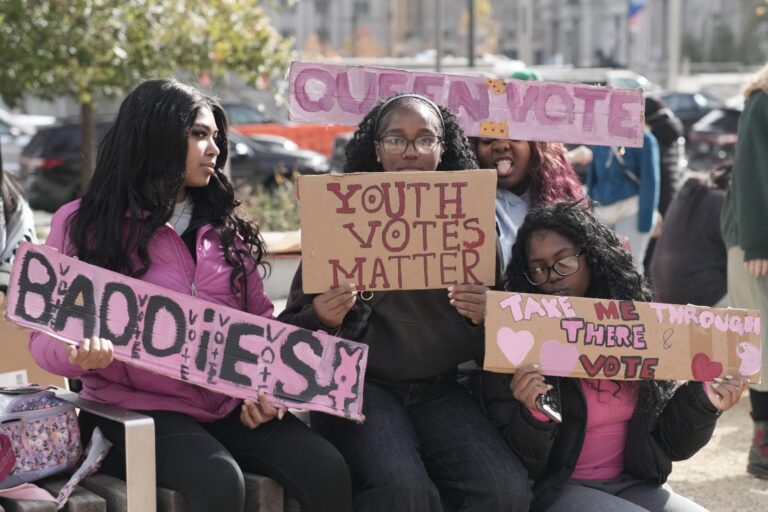
**USDA Data Casts Doubt on Promised Surge in Chinese Purchases of American Soybeans**
_By JOSH FUNK
OMAHA, Neb. (AP)_
New data released by the U.S. Department of Agriculture (USDA) on Friday is raising serious doubts about whether China will fulfill its widely promoted promise to buy millions of bushels of American soybeans. Last month, following a high-stakes meeting between President Donald Trump and Chinese leader Xi Jinping, the Trump administration touted a breakthrough deal—though the latest numbers suggest a different story.
The USDA report, published after the government shutdown ended, revealed only two official Chinese purchases of American soybeans since the summit in South Korea, totaling just 332,000 metric tons. That’s a far cry from the 12 million metric tons Agriculture Secretary Brooke Rollins said China agreed to buy by January, and still much lower than the 25 million metric tons she claimed would be purchased annually for the next three years.
American farmers, who have long viewed China as their top export market, were hopeful that sales would resume at previous levels. However, Tanner Ehmke, lead economist for grains and oilseeds at CoBank, says there’s currently little incentive for China to buy from the U.S. “They have plenty of soybeans on hand, purchased this year from Brazil and other South American countries,” Ehmke explained. “The remaining tariffs ensure that U.S. soybeans remain more expensive than Brazilian beans.”
“We are still not even close to what has been advertised from the U.S. in terms of what the agreement would have been,” Ehmke added.
So far, Beijing has not confirmed any detailed soybean purchase agreement, only stating that the two governments had reached a “consensus” on expanding trade in farm products. Ehmke noted that even if China did promise to buy American soybeans, it might only do so if prices become more attractive.
The White House did not immediately respond to questions regarding the lack of Chinese purchases or whether farmers can still expect the significant aid package President Trump promised earlier. Currently, a 24% Chinese tariff on American beans remains in place, down slightly from before the summit, but still making U.S. soybeans less competitive compared to Brazilian ones.
Soybean prices dropped sharply, falling by 23 cents to $11.24 per bushel on Friday. Ehmke attributed the decline to “the market being shocked by the lack of Chinese demand that was confirmed in USDA data today.” Although prices remain higher than before the agreement—when they hovered around $10.60 per bushel—they may continue to drop unless China resumes significant purchases.
Before this new trade deal, the Trump administration pledged an aid package to help farmers weather the trade war. That promise was put on hold during the government shutdown, and it’s unclear what support, if any, might be forthcoming.
For many American farmers, the uncertainty surrounding Chinese purchases is all too familiar. When China and the U.S. signed a trade agreement in 2020, it included commitments to purchase large quantities of U.S. crops. However, the COVID-19 pandemic soon disrupted trade between the countries, just as the deal went into effect. In 2022, U.S. farm exports to China hit record levels but have since declined.
Despite the recent challenges, U.S. soybean prices are still slightly higher than a year ago—even without China purchasing its usual quarter of the American crop. This is partly due to a smaller soybean crop this year and robust domestic demand, particularly from the rapidly growing biodiesel industry. However, farmers are grappling with soaring costs for fertilizer, seed, equipment, and labor, which continue to squeeze profits.
Caleb Ragland, a Kentucky farmer and president of the American Soybean Association, expressed concern that thousands of farmers could go out of business this year without significant Chinese purchases or government aid. “We don’t want to assume they won’t follow through. But it’s going to be a wonderful day when we actually deliver those soybeans, when there’s money in hand and the transaction’s complete,” Ragland said, conveying both hope and apprehension.
China remains by far the world’s largest buyer of soybeans. Last year, China purchased more than $12.5 billion worth of American soybeans, out of nearly $24.5 billion in total U.S. exports. But after President Trump imposed tariffs, China sharply reduced its purchases from the U.S. and continued shifting toward South American suppliers. Even before the trade war, Brazilian beans accounted for over 70% of China’s soybean imports last year, while the U.S. share fell to just 21%, according to World Bank data.
Ragland added that every vendor he talks to says they are increasing prices for next year—a troubling trend for already struggling farmers. “We’re still looking at sharp losses and the red ink as we figure budgets for ’26 is still very much in play,” he noted.
As American farmers await clarity—either in the form of revived Chinese demand or renewed government assistance—uncertainty and caution continue to dominate the U.S. soybean industry outlook.
_AP Writer Didi Tang contributed to this report from Washington._
https://www.bostonherald.com/2025/11/14/china-soybean-purchase-doubt/



